105-mm self-propelled artillery installation M7 "Priest"
M7 served as the main ACS of the United States of America in World War II. The M7 ACS was a standard artillery of tank divisions, and was also used by corps artillery and infantry units. M7 was used by American troops in all theaters of war, primarily in Western Europe, where many tank divisions operated. In addition, more than 1000 ACS was transferred under the Lend-Lease program of France and the UK.
His history The M7 self-propelled artillery unit launched the 1941 of the year in October after Major General J. Devers, the head of the Armored Forces, recommended the development of an 105-mm self-propelled howitzer based on the new medium tank M3. Interestingly, the production of the tank M3 began just three months before. According to this assignment, the prototypes that received the designation 105mm Howitzer Motor Carriage T32, were made by Baldwin Locomotive Works. Tests were held at the Aberdeen Proving Ground. The first prototype of 5 February 1942 of the year, after preliminary tests, was transferred to Fort Knox, where the tests continued for three days. According to the test results, the US Army Armored Committee concluded that after finalization, the T32 will meet the demands put forward by the army.
The thickness of the cutting armor in accordance with the recommendations of the Panzer Committee was reduced to 13 mm. Also, the howitzer was shifted to the right to provide a sector of horizontal guidance in 45 degrees. To reduce the height of the self-propelled gun, the Panzer Committee allowed to reduce the maximum angle of elevation to 35 degrees in comparison with the 65 specified in the original TK. Another requirement was the equipment self-propelled 12,7-millimeter anti-aircraft machine gun. Various options for locating the folding swivel installation above the engine compartment, or the turret at the wheelhouse corner were worked out. As a result, preference was given to the second variant, which resulted in changes in the configuration of the frontal part. The height of the stern and sides of the cabin was reduced by 280 mm, the frontal part was increased by 76 mm. The ammunition load increased to 57 shots thanks to a change in the ammunition.
In February 1942, all of these changes at the Aberdeen Proving Ground were made to the second prototype T32, which was then sent to the American Locomotive Company plant for use as a sample during mass production. The T32 in April 1942 was adopted under the designation 105mm Howitzer Motor Carriage M7.
The M7 ACS has retained the layout layout of the base tank M3. The engine compartment was located in the aft part, the fighting compartment in the middle part in the fixed cabin open to the top, the control compartment and the transmission compartment in the frontal part. The self-propelled crew consisted of 7 people: squad leader, driver, gunner, and four crew numbers. In addition, the supply mechanic and two ammunition carriers were part of the M7 department.
The differentiated body armor of the M7 self-propelled artillery system was designed to protect against small-arms fire. weapons and splinters. On machines of earlier releases, the lower part of the hull consisted of a cast, three-sectional frontal part of a cylindrical shape. Thickness - from 51 to 108 mm, tilt angles - from 0 to 56 degrees. The thickness of the rolled vertical side sheets was 38 mm, the stern sheet - 13 mm. Tilt angles - from 0 to 10 degrees. In the area of the engine compartment, the bottom thickness was 13 mm, in the frontal part - 25 mm. In the manufacture of the first self-propelled guns, rivets were used when assembling the lower part of the hull, but later these connections were made by welding. In addition, on late-release machines, the three-piece frontal part was replaced with a solid one. Starting with 1944, on M7, the lower part of the body was made of non-armored steel (thickness 13 and 25 mm), and the cylindrical frontal part was replaced with a wedge-shaped part.
On all M7, the upper part of the hull, including the space above the engine compartment, was assembled from 13-mm rolled sheets of homogeneous armored steel and had a slope of 30 degrees in the frontal part. Boards and sterns were installed vertically. 13-mm sheets of the roof of the engine compartment, installed at an angle of 83 degrees. The stern and sides of the cabin had a lower height in comparison with the frontal part, but on self-propelled guns of later releases this difference was compensated by the use of folding panels. On the right side there was a cylindrical sponson for a ring machine-gun turret, in the frontal part there was a gun embrasure, which was closed from the inside with a movable shield. To protect the fighting compartment from the weather used a canvas awning. Embarkation / disembarkation of the crew was carried out through the top of the cabin. Access to the transmission and engine units was provided through hatches in the aft and roof of the engine compartment, as well as a removable frontal part of the hull.
On the basic modification of the self-propelled guns M7 installed radial aviation Continental 9-cylinder, four-stroke, air-cooled carburetor engine, Model R975 C1. This engine with a working volume of 15945 cm³ developed an object power of 350 hp. and maximum 400 hp at 2400 rpm The objective and maximum torque at 1800 rpm were 1085 and 1207 N • m (111 and 123 kgf • m), respectively. Four fuel tanks (totaling 662 liters) were installed in the engine compartment: two vertical 112-liter tanks - at the partition between the fighting and engine rooms, two tanks with a capacity of 219 liters - in the sponsors of the hull. As the fuel for the engine, gasoline with an octane rating of more than 80 was used.
The power unit of the M7B1 modification was the 8-cylinder V-shaped aviation four-stroke liquid-cooled carburetor engine manufactured by Ford, GAA model. Displacement 18026 cm³. At 2600 rpm, the GAA engine developed its 450 horsepower. and maximum xnumx hp At 500 rpm, the object and maximum torque was 2200 and 1288 N • m (1410 and 131 kgf • m), respectively. Fuel requirements were similar to those of the R144 engine. The total amount of fuel tanks was reduced to 975 liters.
The M7 ACS transmission consisted of: a two-disk half-centrifugal main friction dry friction (type D78123), a propeller shaft, a mechanical five-speed (5 + 1) gearbox, a double-differential rotation mechanism, side bend, and a single cushion reducer; 2,84 number: 1).
On each side, the undercarriage of the M7 self-propelled unit consisted of 6 rubberized single-sided road wheels (diameter 508 mm), 3 supporting rubber wheels, a sloth and drive wheel equipped with removable gear rims. Suspension roller type rollers VVSS interlocked in pairs. Two balancers with support rollers attached to them, pivotally connected to the body of the suspension truck, communicate through sliding supports with the beam, through a buffer pad connected to an elastic element in the form of two conical springs located along the axis of the tank. On the body of the trolley suspension was attached supporting roller. When the suspension is working, the balance bar lifts the end of the rocker arm through the sliding platform, through the buffer pad that compresses the springs and evenly distributes the load on both rollers. At the first M7, D37893 suspension trolleys were installed, but in December 1942, self-propelled artillery mounts began to be equipped with reinforced D47527 trolleys. The main difference is the location of the supporting roller not above the center of the cart, but above the rear support roller.
The M7 steel tracks are fine-knit, lanterning, rubber-metal hinge consisted of 79 tracks (width - 421 mm, pitch - 152 mm) each. On the M7 SAU, 4 caterpillar models were used: rubber coated tracks with chevron - T48, steel tracks with ground loops - T49, with flat rubberized tracks - T51, with steel tracks with chevron - T54E1.
The main armament of the M7 ACS was the modified M105A2 1-mm howitzer. The length of the barrel M2A1 was 22,5 caliber. The howitzer had hydro-pneumatic recoil devices and a manual horizontal wedge gate. The howitzer recoil length was 1066 mm. The gun was located in the frontal part of the body (offset to the starboard side) on a standard field gun carriage. This placement of the gun in the self-propelled gun limited the limiting vertical angles of pointing to −5 ... + 35 degrees and in the horizontal plane on the left side to 15 degrees and on the right side to 30 degrees. The tip was carried out using hand screw mechanisms. When firing direct fire, the gun was guided with the M16 periscope optical sight, shooting from closed positions was carried out with the help of the M4 quadrant and the M12A2 artillery panorama.
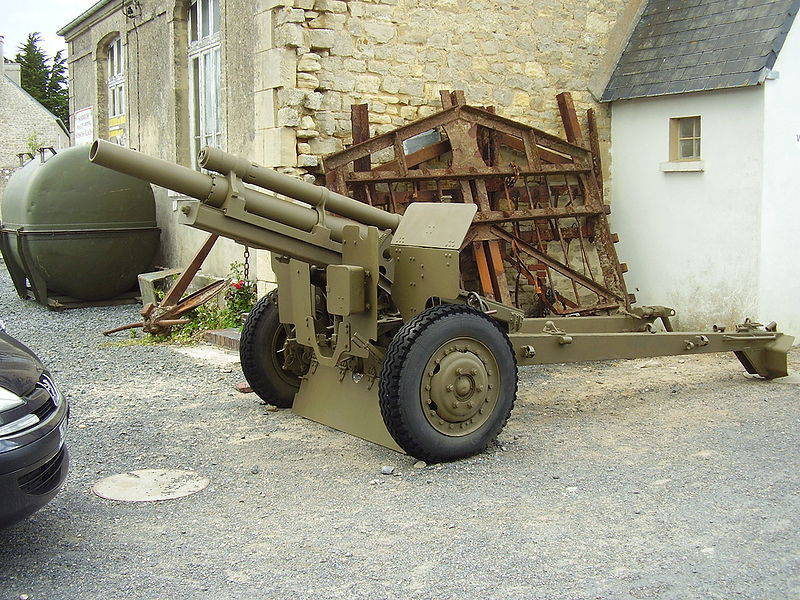
105 mm howitzer M2A1
When firing, the crew’s functions were distributed as follows: the general management of the calculation was carried out by the commander, the driver kept the self-propelled brakes at a shot, horizontal guidance and corrections were carried out by the gunner, the calculation number 1 operated with the vertical guidance of the gun and the shutter, No. 2 loaded the weapon, No. No. 3 and 4 installed a fuse and changed the charge, and also fired with a periscopic sight when firing direct fire.
With continuous firing, the gun’s firing rate in the first one and a half minutes of firing was 8 shots per minute, in the first four minutes - 4 shots and in the first 10 minutes - 3 shots. For an hour, the gun could fire up to 100 shots. The maximum firing range of smoke and high-explosive fragmentation projectiles was 10424 m.
In the early SAU, the M7 ammunition consisted of 57, and in the subsequent, 69 rounds. The ammunition consisted of smoke and high-explosive fragmentation projectiles, as well as cumulative projectiles that pierced 102-mm homogeneous steel armor. For the howitzer M2A1, semi-unit shots were used for various types of ammunition, except cumulative, in which unitary shots with a fixed charge were used. From 69, 19 and 17 shots were located in the left and right corps sponsons, the rest of the 33 shots were located in drawers under the floor of the combat compartment. Also, the self-propelled gun could tow a trailer M10, carrying additional 50 shots.

The first prototype T32 on trial in Fort Knox
The M7 12,7-mm anti-aircraft machine gun M2HB, located in the turret ring installation, which provided round fire, was used as an auxiliary armament of the M300 SAU. Ammunition of machine guns - 6 cartridges of ribbons placed in 90 loaded into the box-store. Initially, the ribbons were filled with 10% armor-piercing and 80% tracer bullets. Later this ratio was changed to 20 / 11,43 percent. For the crew’s self-defense, there were three 1928 mm submachine guns M1A3 or M1620 with 54 cartridges in XNUMX box magazines. In addition, there were hand grenades: two fragmentation Mk.II and six smoke.
On the march, the ACN mechanic-driver M7 watched the terrain through a viewing hatch on which a removable windshield was installed. For the review during the battle, a prismatic viewing device mounted in the manhole cover was used. The rest of the crew had no special means of observation, except for sighting devices. Also in M7 there were no special intercoms, external communications - the Flag Set M238 signal flags. The ACS was also completed with the signal signs Panel Set AP50A. The M7 fire control center in equipped firing positions was usually connected by laying field telephones. In the British troops “Priest”, due to the reduction of the ammunition for the 24, a shot could be equipped with a radio station for external communication.
M7 for extinguishing fires was equipped with a stationary single-action carbon dioxide manual fire protection system, which consisted of two 5,9-liter cylinders installed in the engine compartment under the floor and connected to pipes with nozzles located in the engine compartment. Also, the self-propelled gun was completed with two portable fire extinguishers, which contained 1,8 kg of carbon dioxide and were placed in the sponsons of the body. The SAU also included three 1,42-kg degassing M2 devices.
At one time, the ACS M7 was interested in the leadership of the British army. The British, barely seeing the "pilot" model, ordered 5500 units. The first 2500 ACS M7 British tank mission ordered the US 1942 of the year in March. They should have been delivered before the end of 1942. Another 3000 self-propelled guns were supposed to arrive during the 1943 year. But the priority in obtaining self-propelled artillery installations belonged to the American army, and therefore the British were not able to get the desired number of M7. In September, the British 1942 received the first 90 self-propelled guns M7. The British M7 was renamed "105mm SP, Priest" (Priest, priest). Machines entered the artillery battalions of tank divisions. The main objective of "Priest" was the implementation of fire support from remote positions during the onset of infantry and armored vehicles. In this regard, self-propelled armor protection was no more than 25 mm and protected only from fragments and bullets.
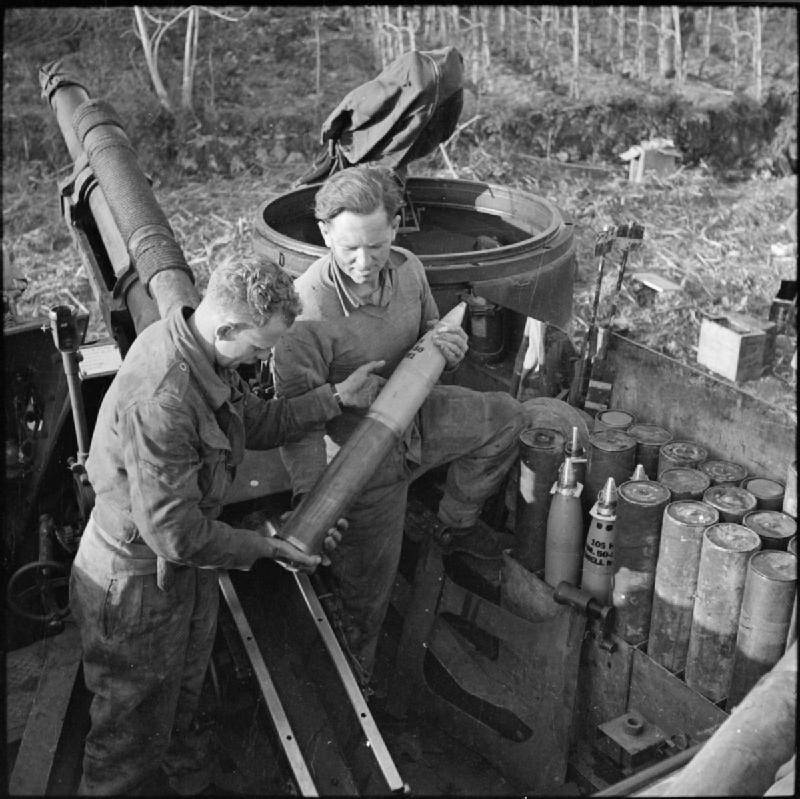
Self-propelled guns M7 in November 1942, took part in the fifth regiment of the Royal Horse Artillery in the battle of El Alamein. This battle led to the defeat of the German troops in the desert. In 1943, these self-propelled guns as part of the 8 Army participated in the landing in Italy. The British army by this time additionally received 700 machines, some of which were used for operations in Normandy.
In 1942, the British General Staff ordered the creation of its own ACS support based on the M7. The American 105-mm gun was replaced by an 87,6-mm howitzer. As a basis, having considered possible options for modernization, we chose the chassis of the Ram tank, having mounted a new armored cabin on it. The workplace of the driver was shifted to the right, and the gun mount - to the left. Due to the tightness of the fighting compartment, a small ammunition was placed near the left side, and the anti-aircraft machine gun had to be removed. An experienced self-propelled gun was assembled at the end of 1942, at the Montreal Locomotive Works. The car was immediately sent to the UK for testing. In 1943, mass production of a self-propelled unit called “Sexton” was started. By the end of the 1943 of the year, the 424 of the vehicle was built, until the spring of the 1945 of the year (cessation of production) 2150 self-propelled units were commissioned, and for the last batches the chassis of the medium tank M4 was used. "Sexton" gradually supplanted the American M7, but both self-propelled guns remained in service with the British army even after the war ended.
ACS M7 in the summer of 1944, began gradually to be replaced by self-propelled artillery installations «Sexton». Part of the rejection of the M7 self-propelled artillery mounts was determined by the desire to unify the ammunition supply. British engineers took the M7 as the basis for the development of the Priest OP and Priest Cangaroo armored personnel carriers. With the M7, a howitzer was dismantled, the front embrasure was closed with armor plates, and the compartment was equipped for transporting 20 people. The US Army willingly used the M7 during the fighting on the Western Front, but in January of the 1945 of the year they were transferred to the second line and replaced with the M37 self-propelled artillery.
The M7 ACS in the post-war period was in service in the American army, as well as in some other states. M7 participated in the Korean War. During the Arab-Israeli war 1967, these SAUs were used by the Israel Defense Forces.
Israel 36 self-propelled units M7 "Priest" were obtained in the 1959 year, and the following year came another 40 self-propelled gun data without tools. Apparently, the corps of the latter were used in the production of 160-mm self-propelled mortars and / or 155-mm self-propelled artillery installations. ACS Priest were in service with three divisions - the regular Shfifon (previously armed with AMX MK 61 self-propelled guns) and two reserve ones (including 822). In total, at the beginning of the 1960s in Israel, there were 5 divisions armed with 105-mm self-propelled artillery guns (2 MK 61 and 3 Priest), one of which is the regular Shfifon.
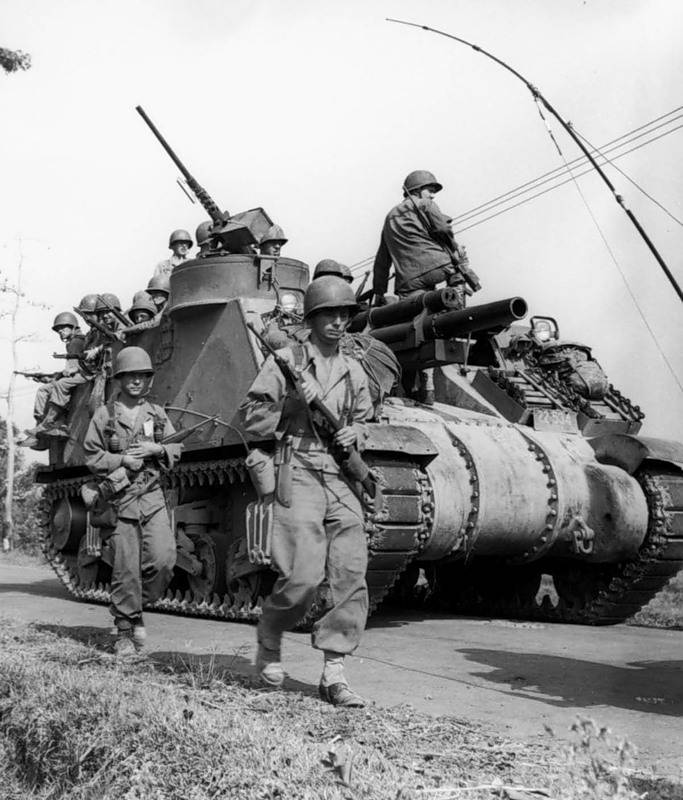
Priest self-propelled artillery mounts were used in the 1964-1965 Water Battle, the Six-Day War 1967 of the Year, and the War of Exhaustion 1969-1970 (all those self-propelled guns were already in reserve at that time). It is known that 26 July 1969, during the attack of the Egyptian aviation on the position of the battery "Beth" 822-th division of the 209-th artillery regiment, two self-propelled guns "Priest" were destroyed.
Two Priest divisions in 1973 fought on the Syrian front in the 213 and 282 artillery regiments of the 146 and 210 divisions. Soon after the war, both divisions were re-equipped with self-propelled M107 units, and all Priest self-propelled guns were transferred to storage.
The history of using the Priest ACS in the Israel Defense Forces has not ended.
The commander of the NWO in April 1974 was Raphael Eitan (Rapoul), who paid much attention to strengthening territorial defense. Among other machines was 10 ACS "Priest" which were withdrawn from warehouses and refitted. From self-propelled guns pulled out the transmission and the engines replacing them with an additional combat pack. The vehicles were installed in pairs in 5 settlements in order to fire at previously selected critical targets, such as crossings across the Jordan. It is unclear how long Priest was maintained in working condition - probably until the change of the commander of the NWO of the 1978 year of August. It is possible that the 10 data of self-propelled units did not leave their positions for a long time.
Israel, according to Jane's, had an 2003 M35 “Priest” on 7, which in this case was “in service”, according to IISS 34, such self-propelled artillery installations were counted by the Israel Defense Forces up to 1999 / 2000 inclusive. At 2008, Priest’s list was no longer on Jane's lists.
In the Israel Defense Forces, this self-propelled gun had no special name, and was designated “TOMAT Priest”.
Specifications:
Combat weight - 22,9 t.
Crew - 7 man.
Production - 1942 — 1945 years.
Number of issued - 4316 pcs.
Body length - 6020 mm.
Case width - 2870 mm.
Height - 2946 mm.
Ground clearance - 430 mm.
Type of armor: cast homogeneous and steel rolled.
The forehead of the body is 51 ... 114 mm / 0 ... 56 degrees.
Housing side - 38 mm / 0 deg.
Body Feed - 13 mm / 0 deg.
Bottom - 13 — 25 mm.
Forehead felling - 13 mm / 0 deg.
The cabin deck is 13 mm / 0 deg.
Feeding chow - 13 mm / 0 deg.
The roof of the cabin is open.
Armament:
105-mm howitzer M2A1 with barrel length 22,5 calibers.
Vertical guidance angles - from −5 to + 35 deg.
Horizontal guidance angles - from −15 to + 30 deg.
Firing range - 10,9 km.
Ammunition guns - 69 shots.
12,7-mm machine gun M2HB.
Sights:
M16 telescopic sight.
Panoramic sight M12A2.
Engine - 9-cylinder radial carburetor air cooling capacity 350 l. with.
Speed on the highway - 38 km / h.
Cruising on the highway - 190 km.
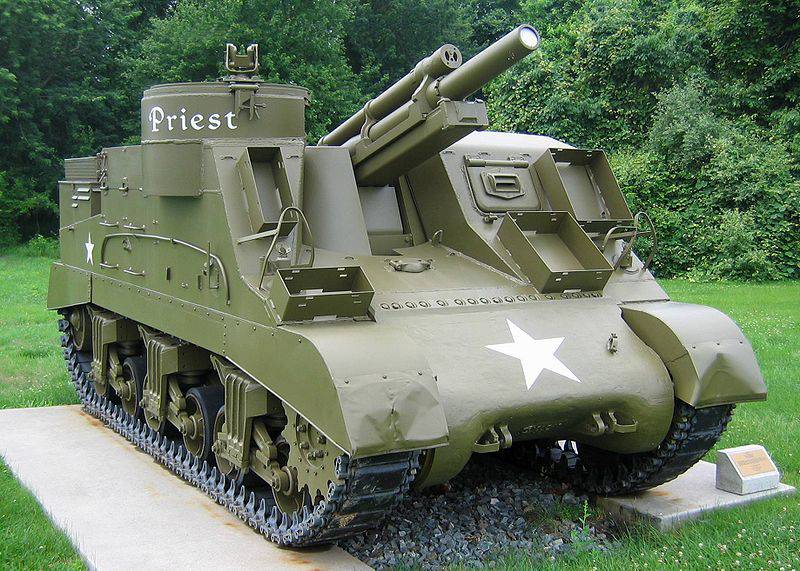
Based on materials:
http://www.dogswar.ru
http://pro-tank.ru
http://bukvoed.livejournal.com
http://milday.ru
http://vn-parabellum.com
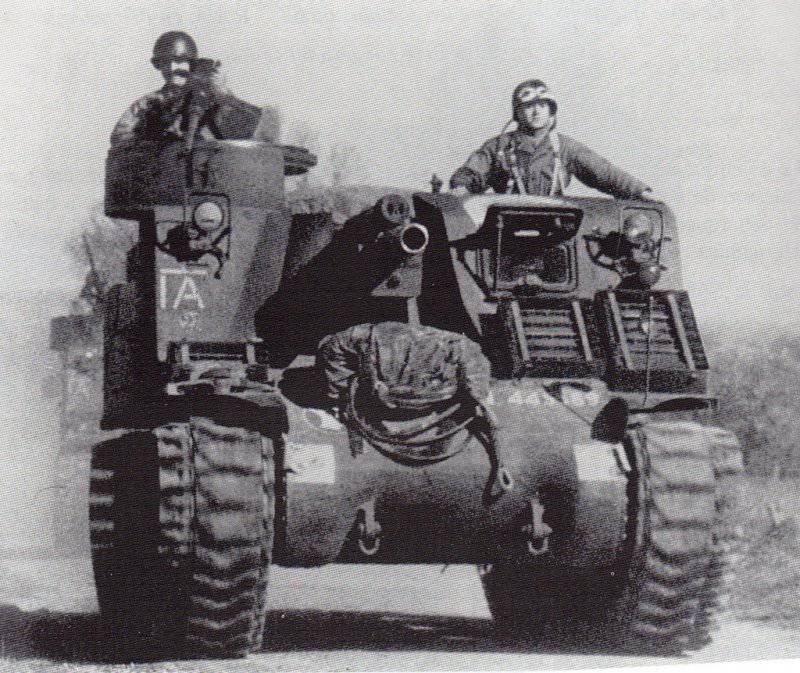
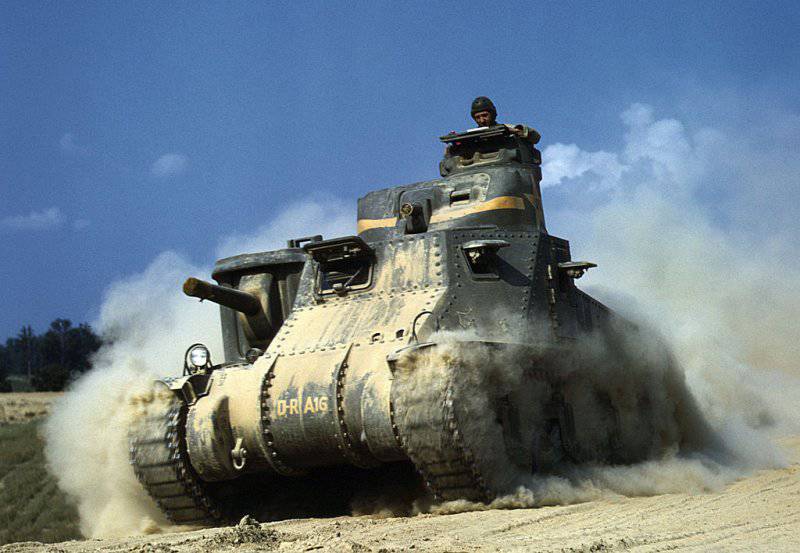
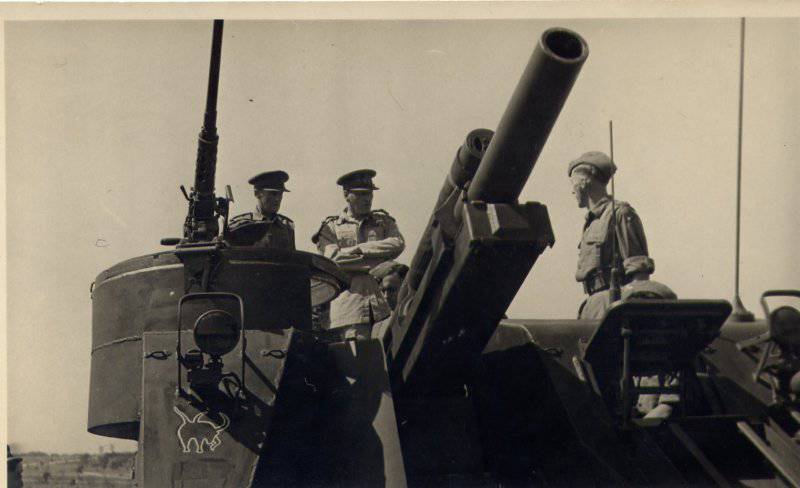
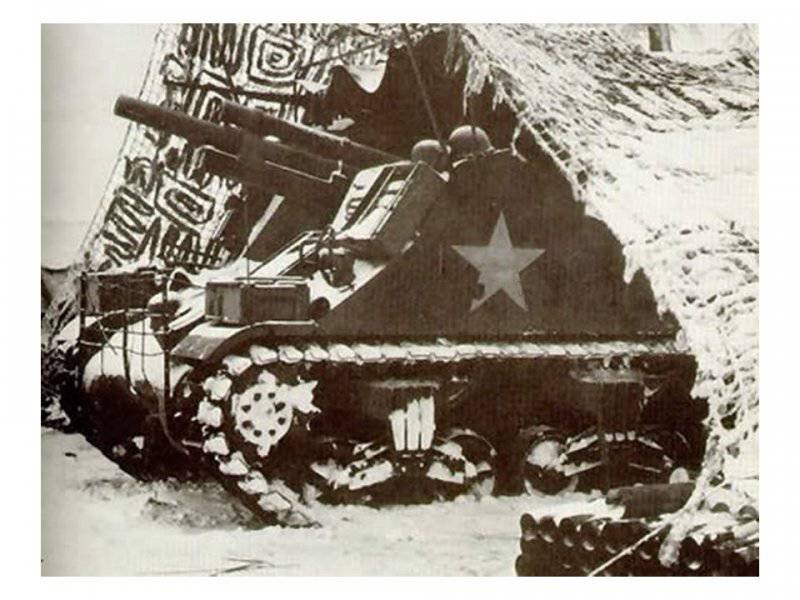
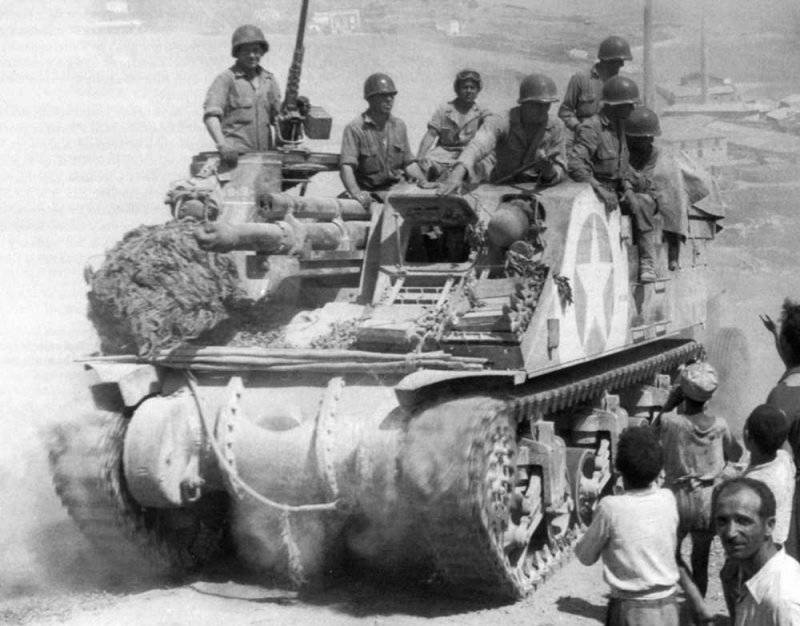
Information